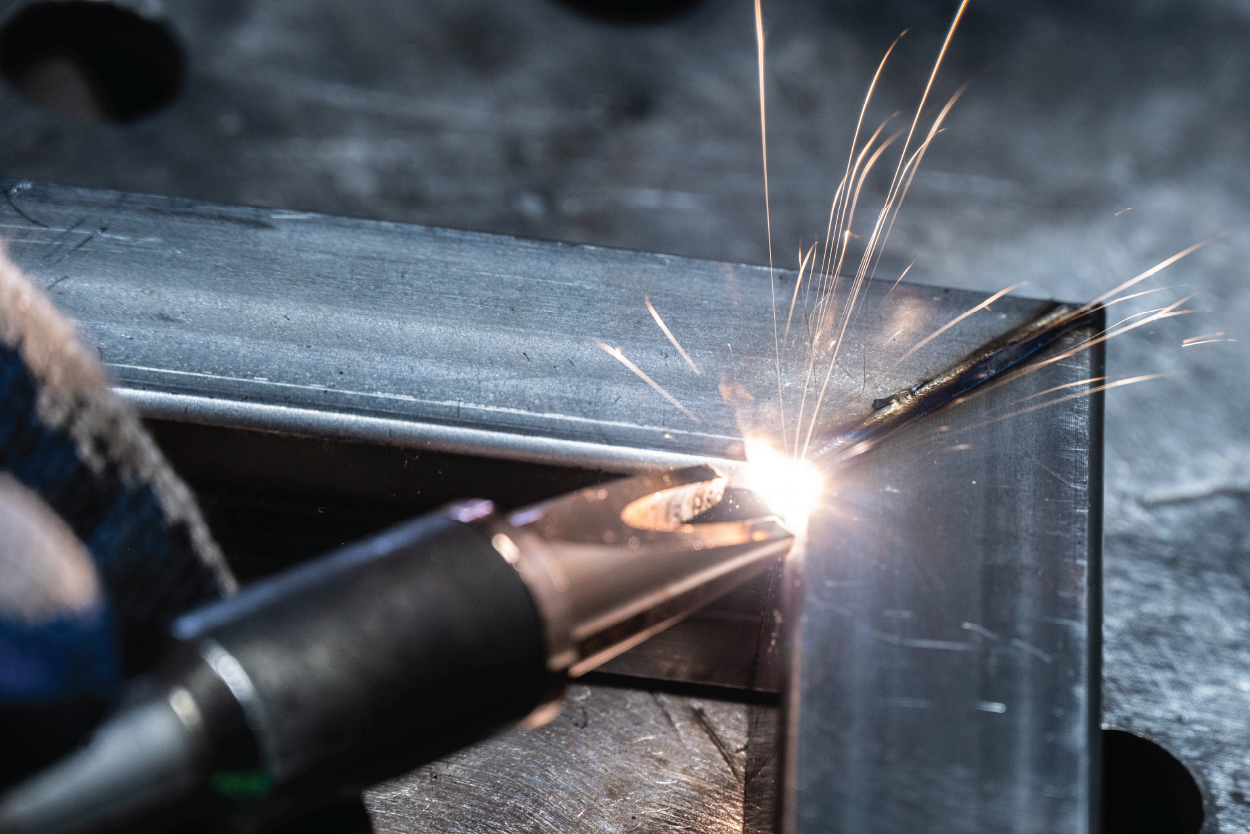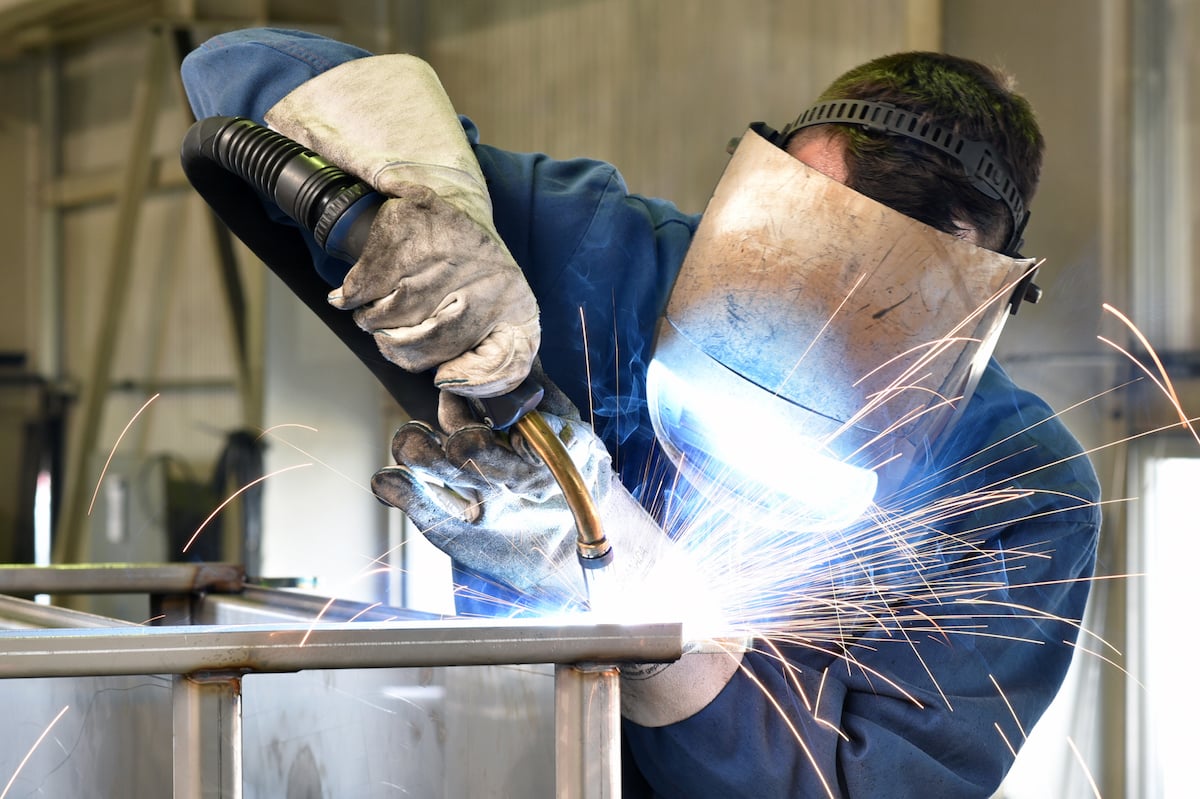Prevent welding failures with guidance by Montana Mobile Welding and Repair Belgrade Fabrication
Wiki Article
Common Welding Fixing Issues and Just How to Address Them Properly
Welding fixings frequently run into a series of problems that can jeopardize the integrity of the last product. Typical issues include insufficient penetration, porosity, and misalignment, to name a few. Each defect provides special challenges that call for details techniques for resolution. Recognizing these concerns is crucial for welders intending to boost their abilities and outcomes. This discussion will certainly discover these usual welding repair issues and effective approaches to resolve them.Insufficient Penetration
Poor infiltration takes place when the weld metal stops working to fully fuse with the base product, resulting in weak joints and possible architectural failings. This issue usually originates from insufficient heat input, inaccurate electrode angle, or improper welding speed. Welders might experience inadequate infiltration due to a mistake of the required criteria for a details product thickness or type. Furthermore, contamination on the base product's surface can hinder reliable bonding, intensifying the trouble. To deal with poor infiltration, welders should ensure proper settings on their tools and preserve a tidy job surface. Routine assessment of welds is advised to determine any type of deficiencies early, permitting for timely modifications and the avoidance of endangered structural stability in welded settings up.Porosity
Porosity is a typical defect in welded joints that materializes as tiny gas bubbles trapped within the weld steel. This flaw can jeopardize the honesty of the weld, bring about decreased toughness and prospective failure under anxiety. Montana Mobile Welding and Repair Welding. Porosity typically emerges from contamination, wetness, or improper welding strategies, which permit gases to escape right into the liquified weld pool. To attend to porosity, welders ought to assure correct surface area prep work, keep a clean workplace, and make use of appropriate welding criteria. Furthermore, picking the appropriate filler product and protecting gas can reduce gas entrapment. Normal assessment and testing of welds can aid recognize porosity early, guaranteeing prompt restorative activities are taken, thereby maintaining the high quality and integrity of the bonded frameworkImbalance
Misalignment in welding can arise from different elements, consisting of incorrect setup and thermal expansion. Recognizing the origin is necessary for reliable resolution. Numerous modification methods are offered to realign elements and guarantee architectural integrity.Sources of Misalignment
Welding misalignment typically originates from a range of underlying issues that can compromise structural honesty. One key cause is improper fit-up of components prior to welding, which can bring about spaces and uneven surfaces. Variations in thermal development during the welding process can likewise lead to distortion, particularly if the materials being signed up with have various coefficients of growth. Furthermore, inadequate fixturing and clamping might stop working to hold parts safely in position, bring about motion during welding. Poorly conserved devices, including welding makers and devices, might introduce variances in the weld grain, further adding to imbalance. Ultimately, driver mistake, coming from not enough training or experience, can additionally play a significant role in creating misaligned welds.Correction Techniques Readily Available
Resolving imbalance properly requires a combination of rehabilitative methods customized to the specific issues handy. One common approach is the usage of jigs or components to hold elements in the correct placement during welding, guaranteeing constant positioning. Additionally, pre-heating the materials can help in reducing distortion and boost fit-up. For considerable imbalance, mechanical adjustment methods, such as utilizing hydraulic jacks or clamps, can be utilized to remedy the setting before welding. Post-weld warmth therapy may also be required to alleviate stress and anxieties brought on by imbalance. Ultimately, cautious examination and change during the setup stage can protect against imbalance issues from coming to be substantial issues, advertising a smoother welding process and enhancing total structural integrity.Distortion
Distortion is a common difficulty in welding that can develop from various factors, consisting of irregular cooling and heating. Recognizing the root causes of distortion is essential for applying reliable avoidance techniques. Resolving this concern not just boosts architectural honesty but likewise boosts the general high quality of the weld.Sources of Distortion
When subjected to the extreme heat of welding, materials often undergo adjustments that can bring about distortion. This sensation primarily develops from thermal expansion and contraction throughout the welding process. As the weld location warms up, the material expands; upon cooling, it contracts, which can create interior stress and anxieties. On top of that, unequal home heating across a work surface can intensify these stress and anxieties, causing warping or bending. The type of product likewise plays a substantial duty; steels with differing thermal conductivity and coefficients of expansion might react in different ways, leading to unpredictable distortions. Additionally, poor joint layout and inadequate fixturing can add to misalignment throughout welding, raising the chance of distortion. Comprehending these causes is vital for effective welding fixing and prevention techniques.Prevention Techniques
Effective avoidance methods for distortion throughout welding emphasis on managing heat input and making certain appropriate joint design. Keeping a consistent heat input assists to decrease thermal expansion and contraction, which can result in distortion. Making use of techniques such as preheating the workpiece can likewise reduce the temperature slope, advertising consistent home heating. Furthermore, choosing proper joint layouts, such as T-joints or lap joints, can enhance stability and decrease stress concentrations. Carrying out proper fixturing to secure the workpieces in area even more aids in keeping positioning during the welding process. Ultimately, staggered welding sequences can disperse warmth much more equally, stopping localized distortion. By using these approaches, welders can considerably reduce the likelihood of distortion and boost the general top quality of their welds.Splitting
Breaking is a welding steel typical problem encountered in welding fixings, typically arising from different elements such as inappropriate air conditioning rates, product choice, or poor joint prep work. The event of cracks can substantially jeopardize the stability of the weld, leading to potential failures throughout procedure. To resolve this concern, welders need to initially evaluate the source, making certain that materials work and suitably picked for the certain application. In addition, controlling the air conditioning rate throughout the welding process is necessary; rapid cooling can generate anxiety and bring about splitting. Correct joint design and preparation additionally add to reducing the risk. Applying these methods can enhance weld top quality and durability, ultimately minimizing the possibility of fracturing in ended up weldments.
Insufficient Combination
A substantial concern in welding repairs is insufficient combination, which occurs when the weld steel does not adequately bond with the base material or previous weld passes - Belgrade Fabrication. This defect can lead to weak points in the joint, potentially compromising the integrity of the welded framework. Factors adding to incomplete blend consist of not enough warm input, incorrect welding technique, and contamination of the surface areas being signed up with. To address this problem effectively, welders should ensure correct pre-weld cleansing and surface prep work, in addition to readjust their welding specifications to achieve appropriate infiltration and combination. Normal examination during the welding procedure can also aid determine insufficient fusion early, enabling timely rehabilitative steps to enhance the overall high quality of the weldOverheating
While welding repair work can improve structural honesty, overheating presents a significant obstacle that can lead to material destruction. Excessive heat during welding can change the mechanical buildings of steels, causing decreased toughness, raised brittleness, and bending. This sensation is especially essential in high-stress applications where architectural integrity is extremely important. Recognizing getting too hot can entail aesthetic examinations for discoloration or Home Page distortion, along with keeping an eye on temperature level throughout the welding process. To reduce the dangers connected with overheating, welders need to utilize appropriate methods, such as managing heat input, adjusting travel speed, and utilizing suitable filler products. Furthermore, carrying out pre- and post-weld warm therapies can assist restore material homes and enhance the general quality of the repair work, guaranteeing long-term efficiency and security.Regularly Asked Inquiries
What Are the Common Indications of a Welding Defect?

How Can I Test My Welds for Quality?
To check welds for quality, one can use aesthetic inspections, ultrasonic testing, and radiographic methods. Each technique assures structural integrity, determines issues, and verifies adherence to defined standards, eventually enhancing the dependability of the bonded joints.What Security Safety Measures Should I Take While Welding?
When welding, one should prioritize safety and security by using appropriate personal protective tools, making sure correct air flow, securing flammable products away, maintaining a tidy work space, and recognizing environments to prevent mishaps and injuries.Can I Repair a Weld Without Renovating the Entire Joint?
Repairing a weld without remodeling the whole joint is feasible, relying on the damage (Montana Mobile Welding and Repair Belgrade Welding). Techniques such as grinding, adding filler material, or utilizing a welding process can properly address certain flaws while protecting the bordering structureWhat Tools Are Essential for Effective Welding Fixes?
Necessary tools for reliable welding repair services consist of a welding maker, cable brush, mill, protective gear, clamps, and filler materials. Each device plays a vital duty in making certain top quality and safety during the repair procedure. Porosity generally arises from contamination, dampness, or improper welding techniques, which allow gases to escape right into the molten weld swimming pool. Inadequately conserved equipment, consisting of welding devices and devices, might introduce disparities in the weld grain, more contributing to misalignment. When subjected to the extreme warm of welding, materials often undertake modifications that can lead to distortion. Breaking is a typical concern experienced in welding fixings, usually resulting from different aspects such as inappropriate air conditioning prices, product selection, or insufficient joint prep work. A substantial concern in welding repair work is incomplete blend, which takes place when the weld metal does not sufficiently bond with the base product or previous weld passes.Report this wiki page